Why Pay for ChatGPT? Here Are the Top 5 Free AI Alternatives in 2025
Author: Zahra Hassan
With ChatGPT being the leading AI in the tech industry, it’s not surprising to know that over 2 million developers are already taking advantage of the ChatGPT API to build customized AI solutions. And by 2030, it is expected that AI solutions will transform the global economy, raising it up to $15.7 trillion worth! No wonder AI is already on the rise, ready to take over the world!
As much as ChatGPT flaunts itself as being the best AI solution for businesses, it’s not as helpful as it seems to be for startups and businesses due to its cost and limitations on usage.
ChatGPT Limitations
- Limited built-in tools: If you are someone who is looking to create complex AI solutions or workflows, ChatGPT may not be the right solution, as it has limited built-in tools to help you achieve that.
- Third-party apps requirement: For tasks like project management and content tools, you will need third-party apps integration which can be time-consuming and costly depending on the apps you choose.
- Limited control: You will not find ChatGPT as a very friendly AI solution if you are looking to have more control over how AI functions in specific workflows.
- Limited Customizability: Since ChatGPT is mainly designed for generic outputs, it’s not robust enough for extensive customization for specific use cases. It will require significant effort, expertise and financial investment to customize the model for specific needs.
- Usage Limits: If you don’t have a flexible budget, you will find free-tier offerings being very limited in functionality and scale.
What to look for in a ChatGPT Alternative?
One thing to keep in mind after knowing the ChatGPT limitations is that it’s not just about finding an alternative, it’s more about finding the right model to suit your business needs that will seamlessly integrate into your web or mobile apps.
Here’s what you should consider when looking for an alternative:
- Use case suitability: One of the most important questions you should ask yourself when looking for an alternative is: What’s your primary use case? Does the alternative have the functionality you are looking for your purpose and specialization? Look for something that can give you optimal results. It doesn’t have to be an all-in-one solution.
- Integration capabilities: Make sure you find an AI tool that could seamlessly integrate into your existing web or mobile app. It’s important that the tool you are choosing offers custom integrations to adapt to your specific demands, as no companies function the same way.
- Reliability: As much as it’s important to ensure the accuracy of an AI tool, it’s also equally important to assess the AI tool’s response times. Are its outputs consistent?
- Privacy & Security: It’s crucial to evaluate how secure an AI tool is, as cybersecurity and data privacy are two main concerns in any industry. So make sure that the alternative you are choosing guarantees data protection and user privacy.
- Scalability: Thinking about the future of your app is important. When choosing an AI tool, make sure you choose an AI that can be scaled as your needs grow. And ensure whatever model you are choosing is constantly being updated, as you don’t want to get stuck with an outdated model when you are seeing potential growth in your company. Also make sure that it has a user community and support system, as you may need it at times when you least expect it.
Now let’s look at the top 5 API alternatives to power your web & mobile apps in 2025.
Top 5 ChatGPT Free API Alternatives
1. Hugging Face
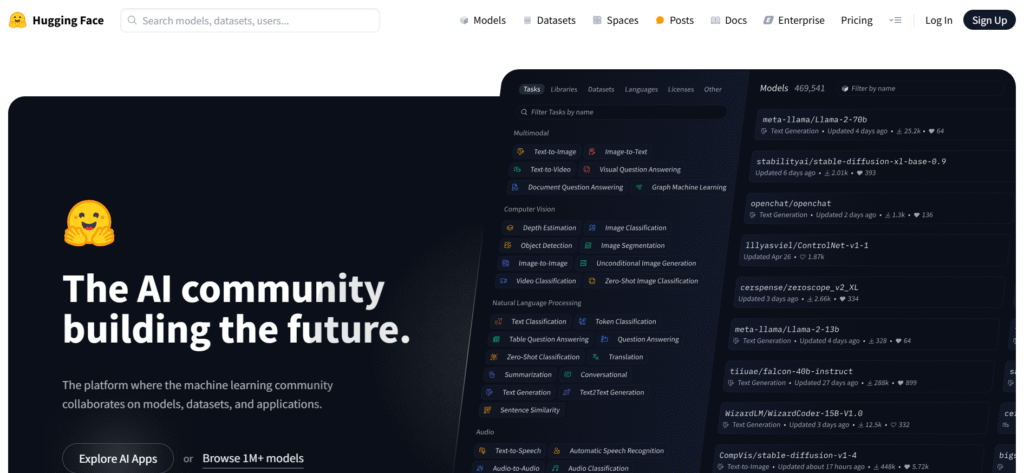
Hugging Face is one of the best free alternatives you can get your hands on. Known for its open source models, datasets and easy-to-use APIs; it has a wide range of tools and resources for Natural Language Processing and Machine Learning.
Key Features:
- Access to thousands of pre-trained models like GPT, BERT, etc. Besides, most of Hugging Face’s tools and models are free and open-source.
- A wide range of datasets for training and evaluation with extensive customization options.
- You can either choose self-deployment or use hosted APIs for running models.
- Offers you a platform to build and share AI powered apps.
- It has an active developer community contributing models, datasets and tools.
Limitations:
- Requires machine learning knowledge to some extent.
- It doesn’t offer a dedicated Chatbot API although you have the option to build one using their models.
- Performance may vary as it’s driven by community contributions.
Best Suited For:
- Building custom AI solutions.
- If you are looking for open-source models, tools and resources for NLP tasks.
- If you are interested in playing around with state-of-the-art (SOTA) AI models without having to build them from scratch.
2. Poe
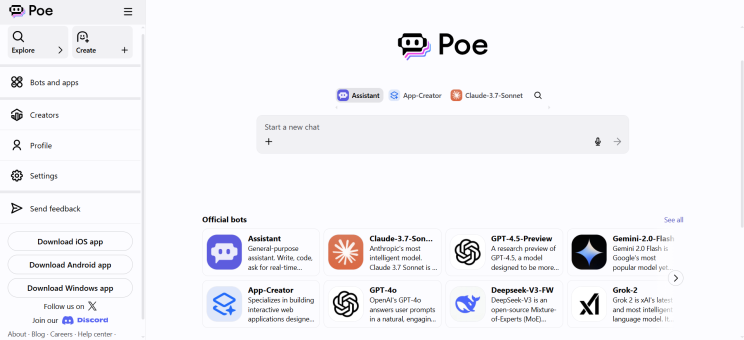
Poe created by Quora is known to be one of the leading ChatGPT free alternatives as it offers access to various AI models in a single interface. What’s more interesting is that it can be used by both casual users and developers to explore and interact with AI.
Key Features:
- Access to a diverse range of AI models like GPT-4, Llama, Claude, etc.
- Great place for testing and experimenting with different AI models.
- Open to custom model experimentation allowing users to create and customize their own chat bots to meet their specific needs or interests.
- Allows you to share bots with others facilitating a collaborative environment for AI exploration.
- API access to integrate Poe into custom applications.
Limitations:
- No deep customization of AI models.
- May not be sufficient for large scale projects due to its usage limits.
- Inconsistent advanced features across different AI models.
Best Suited For:
- Experimenting multiple AI models in one place.
- For integrating Poe’s capabilities into web or mobile applications.
- Prototyping or testing AI-powered features for applications.
3. Cohere
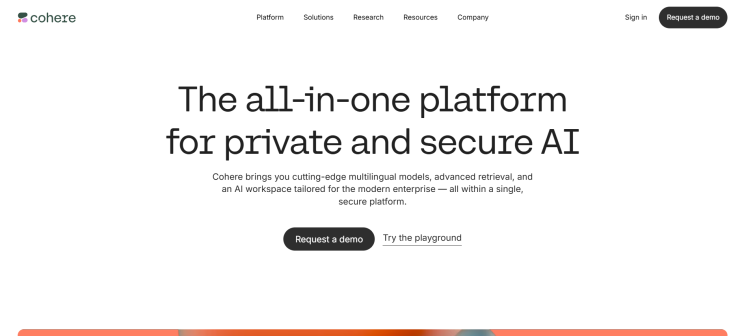
If you are planning to launch a small-scale project, Cohere could be an excellent option for you. It offers NLP tools and APIs powered by state-of-the-art language models. Known for its advanced capabilities, it can handle tasks like text generation, summarization, classification and more. If you are looking to integrate advanced AI capabilities into a small-scale project, Cohere is an alternative to consider.
Key Features:
- Cohere’s API is developer friendly, offering clear documentation and SDKs for popular programming languages.
- Capability to create vector representations of text. It can also generate human-like text, summaries and responses for various use cases.
- Optimized for business apps like customer support, content generation and chatbots. It also supports fine-tuning AI models.
- Suitable for both small and enterprise level projects.
- Good choice for global apps since it works well with multiple languages.
Limitations:
- Only small-scale projects can rely on free tier. May not be sufficient for large-scale projects.
- No open-source available, so you can’t self-host the models available in Cohere.
- It provides a no-code playground which means there’s no dedicated code generation tool available within the platform.
Best Suited For:
- Building applications that require high-quality text generation, summarization or classification.
- For NLP tasks without having to manage any infrastructure, as it’s a hosted API.
- Developing applications that need support for multiple languages.
4. Mistral
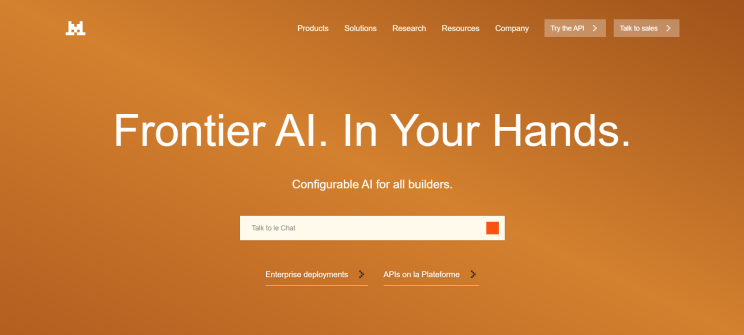
Mistral is another best ChatGPT alternative focusing on open-source and advanced AI models. The platform has set itself apart with its ability to handle complex tasks with consistent performance and accuracy.
Key Features:
- Advanced models supporting multiple languages.
- Competes with larger models like GPT-3 in many tasks.
- Designed for smaller hardware setups, making it cost-effective.
- Supports fine-tuning for specific use cases.
- Advanced code interpretation and generation.
Limitations:
- Requires technical knowledge to set up and deploy the models.
- No hosted API, as it’s open-source, so you will need to manage the infrastructure yourself.
- Less comprehensive documentation, as its resources are still growing.
Best Suited For:
- Building custom AI solutions with full control over the model.
- For building advanced AI applications.
- For cost-effective AI deployments in resource-constrained environments.
5. Rasa
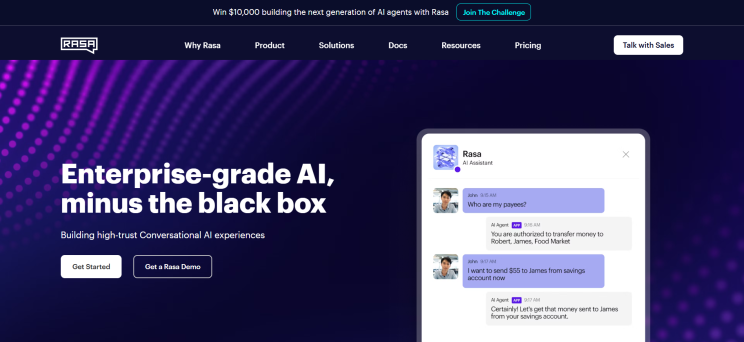
If you are looking to build conversational AI applications like chatbots and virtual assistants with full control over your system, Rasa could be an ideal option for you. It’s an open-source framework allowing you to create, train and deploy conversational AI models on your own infrastructure.
Key Features:
- Open-source framework for building applications like chatbots and virtual assistants where you have full control over the conversational AI pipeline.
- Fully customizable to fit specific use cases.
- Integrates with platforms like Facebook Messenger, WhatsApp, Slack, etc.
- Its Natural Language Understanding (NLU) helps the chatbot or similar applications understand user inputs, and supports dialogue management to manage the flow of conversations.
- It has a large active developer community with lots of tutorials, documentation and plugins.
Limitations:
- No pre-trained language models available. You need to train your own or integrate external models which require knowledge of machine learning, natural language processing, and so on to set up and maintain the system.
- Need your own infrastructure to host the system.
- Not for general-purpose NLP tasks since it’s for building conversational AI applications.
Best Suited For:
- Building a custom chatbot or virtual assistant.
- For training and fine-tuning AI models.
- For integrating with platforms like Facebook Messenger, WhatsApp, Slack, etc.
Conclusion
As you can see, with the increased competition among AI providers, they offer more options and accessibility for developers and companies to make use of their generous free usage options, free tiers and open-source models to integrate AI into your web or mobile applications. Whether you are building a chatbot or an advanced AI solution, you no longer have to worry about breaking your bank to build smarter and powerful apps. We hope the top 5 alternatives we have outlined in this article will help you find the one that best suits your app’s needs.
Further Reading/Resources
WBC Digital Solutions
Book a Consultation
Ready to take the next step? Schedule a consultation with our expert team.
Connect With Us
Follow us for insights and updates, or get in touch instantly!
Explore Related Topics
Other Articles
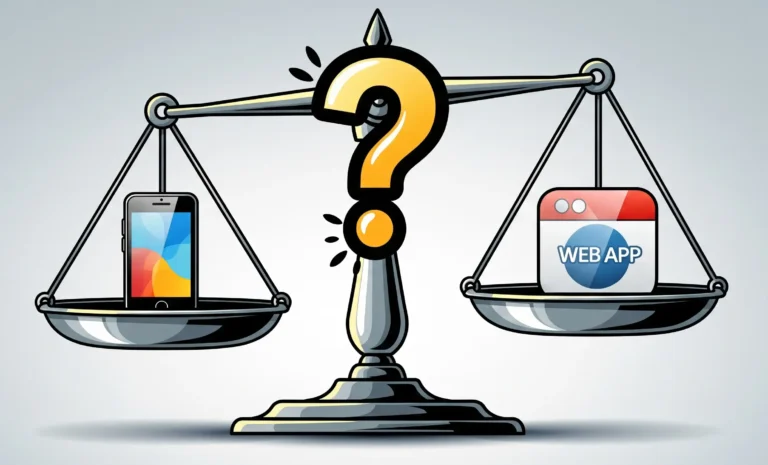
Web App or Mobile App? How to Pick the Right One for Your Business
Looking to build an app? Learn the key features & differences, and how to decide what best fits your business…
Read more →
Why Data Matters in AI Adoption
Discover how quality data drives AI adoption, the challenges of managing it, and why a strong data strategy is key…
Read more →
How E-Commerce Businesses Can Leverage Data to Maximize Sales This Chinese New Year
Here’s how you can use your data to maximize sales in Chinese New Year:
Read more →